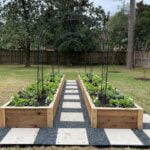Are you looking for landscaping ideas on a hillside? Landscaping on a hillside presents unique challenges and opportunities. Understanding the natural features of the slope, choosing the right plants, and incorporating design elements such as terraces and retaining walls are key to creating a stunning hillside landscape.
When it comes to landscaping on a hillside, it’s essential to assess the natural features of the slope. Factors such as soil composition, drainage patterns, and the steepness of the hillside will all play a crucial role in determining the best approach to landscaping. By understanding these natural elements, you can create a plan that not only enhances the beauty of the slope but also addresses any potential erosion issues.
Choosing suitable plants for a hillside landscape is another important consideration. Certain types of vegetation can help prevent soil erosion, while others may thrive in the unique microclimates found on hillsides. By carefully selecting plants that are well-suited to these conditions, you can create a beautiful and sustainable hillside garden.
Assessing the Natural Features of the Hillside
Understanding the Composition of the Soil
Before beginning any landscaping project on a hillside, it is crucial to understand the composition of the soil. Different types of soil can have a significant impact on what plants will thrive in that area. Conduct a soil test to determine its pH level, drainage capacity, and nutrient content. This will help you select plants that are well-suited to the specific conditions of your hillside.
Evaluating Drainage and Water Movement
Proper drainage is essential when landscaping a hillside. Without adequate drainage, excess water can lead to erosion and instability. Evaluate how water moves across the slope during heavy rainfall and consider implementing measures such as French drains or swales to redirect water away from vulnerable areas. Additionally, planting native vegetation with deep root systems can help absorb excess moisture and prevent erosion.
Analyzing the Slope for Stability
The slope of a hillside plays a crucial role in determining its stability and what design features may be necessary for erosion control. Steeper slopes may require terracing or retaining walls to create flat areas for planting and prevent soil runoff.
It is important to assess the angle of the slope and any potential risks of landslides or erosion before undertaking any landscaping efforts. By understanding these natural features of the hillside, you can better plan and implement effective landscaping ideas on a hillside while minimizing potential challenges.
Choosing the Right Plants for a Hillside Landscape
When it comes to landscaping on a hillside, choosing the right plants is crucial for the success of your project. The unique conditions of a sloped area, such as soil erosion, water runoff, and exposure to wind and sun, require careful consideration when selecting plant varieties. It’s important to choose plants that are not only visually appealing but also well-suited for the specific microclimates found on your hillside.
One important consideration when choosing plants for a hillside landscape is their root systems. Plants with strong, deep roots are ideal for stabilizing the soil and preventing erosion. Native plants are often well-adapted to local conditions and can thrive on a hillside with minimal maintenance. Groundcover plants like creeping juniper or vinca minor can help control erosion and add visual interest to the landscape.
In addition to considering root systems, it’s also important to select plants that can thrive in varying degrees of sunlight and shade. The different elevations of a hillside can create microclimates with different light exposures.
For example, areas at the top of the slope may receive more direct sunlight while those at the bottom may be more shaded. Choosing a variety of plant species that can adapt to these different conditions will help ensure a diverse and visually appealing landscape throughout the entire hillside.
| Plant Type | Best Suited Location on Hillside |
|---|---|
| Creeping Juniper | Slopes for erosion control |
| Vinca Minor | Shaded areas for groundcover |
| Lavender | Sunny areas at top of slope |
Designing Terraces and Retaining Walls for Erosion Control and Visual Appeal
When it comes to landscaping ideas on a hillside, designing terraces and retaining walls is essential in order to control erosion and create visual appeal. These structures help to manage water runoff and prevent soil erosion, making them critical elements in hillside landscaping.
Terracing involves creating a series of flat areas on the hillside, often in the form of steps, which can be used for planting or other landscaping features. Retaining walls, on the other hand, are vertical structures that hold back soil and prevent it from sliding downhill. Both terraces and retaining walls can add visual interest to the landscape while serving a practical purpose.
In terms of materials, there are many options available for constructing terraces and retaining walls, including natural stone, wood, concrete blocks, or even recycled materials. Choosing the right material will depend on factors such as the overall aesthetic you want to achieve, your budget, and the specific needs of your hillside terrain.
One consideration when designing these features is to ensure that they blend seamlessly with the natural surroundings. The goal is to create a cohesive and organic look that complements the existing landscape rather than appearing as an artificial addition.
Additionally, incorporating proper drainage into the design will help to prevent water from building up behind retaining walls or causing erosion along terraced areas. When done thoughtfully and skillfully, terracing and retaining walls can transform a challenging hillside into an attractive and functional part of your outdoor space.
| Landscaping Ideas | Examples |
|---|---|
| Terracing | Creating a series of steps for planting |
| Retaining Walls | Vertical structures holding back soil |
| Materials | Natural stone, wood, concrete blocks |
Incorporating Pathways and Steps for Accessibility and Aesthetic Purposes
When it comes to landscaping a hillside, incorporating pathways and steps is crucial for both accessibility and aesthetic purposes. Not only do pathways and steps provide a functional way to navigate the slope, but they also add visual interest and structure to the landscape. Here are a few ideas for incorporating pathways and steps into your hillside garden:
- Switchback Paths: By creating switchback paths that zigzag up the hillside, you can reduce the steepness of the incline and make it easier to traverse. This also provides an opportunity to showcase different plants and flowers along each level of the path.
- Natural Stone Steps: Utilizing natural stone for steps adds a rustic and organic touch to the landscape. Whether you choose flat stones for a more formal look or irregular stones for a more natural appearance, this option blends seamlessly with the surroundings.
- Gradual Slope Pathways: If your hillside has a more gradual slope, consider creating meandering pathways that follow the natural contours of the land. This can create a sense of discovery as visitors explore different areas of the garden.
In addition to providing practical access to different areas of your hillside garden, pathways and steps can also enhance its visual appeal. They can be used to create focal points, guide the eye toward specific plantings, and offer opportunities for resting spots or seating areas with beautiful views.
By carefully planning your pathways and steps in harmony with the overall design of your hillside landscape, you can create an inviting and enjoyable space that seamlessly integrates accessibility with aesthetic beauty.
Throughout ongoing maintenance efforts, it’s important to keep in mind that regular upkeep will be necessary not only for maintaining the functionality of these features but also for preserving their visual appeal within the context of your overall landscaping ideas on a hillside.
Utilizing Natural Materials for a Cohesive and Organic Look
When landscaping a hillside, incorporating natural materials is essential for achieving a cohesive and organic look that complements the surrounding environment. By using materials such as rocks, boulders, and gravel, you can create a landscape design that seamlessly blends with the natural features of the hillside. This section will explore the various ways in which natural materials can be utilized to enhance the aesthetic appeal of a hillside garden.
Rock and Stone Features
One effective way to incorporate natural materials into hillside landscaping is by incorporating rock and stone features into the design. Large boulders can be strategically placed to add visual interest and create natural focal points within the landscape. Additionally, using stone pathways or retaining walls can help prevent erosion while adding an earthy aesthetic to the garden.
Gravel and Mulch
Another way to utilize natural materials in hillside landscaping is by incorporating gravel and mulch into the design. Gravel can be used for pathways or as ground cover in areas where traditional grass or plants may struggle to grow due to the steep slope. Mulch made from organic materials such as wood chips or bark can also help retain moisture in the soil while providing a naturalistic look to the garden.
Native Plants
Incorporating native plants into the hillside landscape is another way to utilize natural materials while promoting environmental sustainability. Native plants are well-adapted to the local climate and soil conditions, making them ideal for stabilizing slopes and preventing erosion. By choosing native plant species, you can create a harmonious and low-maintenance garden that fits seamlessly into its natural surroundings.
By incorporating these natural materials into your hillside landscaping design, you can create a visually appealing and environmentally sustainable garden that complements the inherent beauty of the hillside terrain.
Using Water Features and Lighting to Enhance the Hillside Landscape
When it comes to landscaping ideas on a hillside, incorporating water features and lighting can significantly enhance the overall look and feel of your garden. Water features such as fountains, ponds, or even a small waterfall can add a sense of tranquility and serenity to your hillside landscape. Similarly, strategic placement of lighting can transform the atmosphere of your garden at night, creating a magical and alluring ambiance.
Here are some ideas to incorporate water features and lighting into your hillside landscape:
- Adding a cascading waterfall: A cascading waterfall not only adds visual interest but also provides soothing sounds that contribute to the serene atmosphere. Consider using natural stones and native plants around the waterfall to seamlessly blend it with the hillside terrain.
- Installing a small pond: A small pond can become a focal point of your hillside garden. You can adorn it with aquatic plants, lily pads, or even colorful koi fish. Incorporating gentle lighting around the pond can create an enchanting display at night.
- Placing strategically positioned lights: As part of your landscaping design, consider placing low voltage lights along pathways, steps, or highlighting specific plants or trees in your hillside garden. This not only adds depth and dimension but also ensures safety during nighttime strolls in the garden.
When planning for water features and lighting in your hillside landscape, it’s important to consider factors such as existing drainage patterns, sunlight exposure, and the natural flow of the terrain. By carefully integrating these elements, you can create a captivating and harmonious outdoor space that can be enjoyed day or night.
Maintenance Tips for a Beautiful and Sustainable Hillside Garden
In conclusion, landscaping on a hillside presents unique challenges that require careful planning and consideration. By understanding the natural features of the hillside, such as soil, drainage, and slope, homeowners can choose the right plants and design elements to create an attractive and sustainable landscape.
Terraces, retaining walls, pathways, and steps are essential for erosion control and accessibility while also adding visual interest to the hillside. Additionally, utilizing natural materials and incorporating water features and lighting can enhance the overall look of the garden.
When it comes to maintenance, regular upkeep is crucial for keeping a hillside garden beautiful and sustainable. This includes proper watering, mulching, pruning, and fertilizing to ensure the health of the plants and prevent erosion. It’s important to regularly inspect retaining walls for any signs of damage or instability to address issues before they escalate. Moreover, maintaining a balance between natural elements and human intervention is key in preserving the integrity of the hillside landscape.
Overall, with careful planning and implementation of effective landscaping ideas on a hillside, homeowners can create a stunning garden that not only enhances the natural beauty of their property but also promotes sustainability for years to come. Implementing these tips will help maintain an attractive and functional outdoor space while also minimizing environmental impact.
Frequently Asked Questions
How to Cheaply Landscape a Steep Hill?
Landscaping a steep hill on a budget can be achieved by using ground cover plants that spread quickly and require little maintenance, such as creeping juniper or vinca minor. Creating terraces with retaining walls can also help stabilize the hill and prevent erosion, while adding visual interest to the landscape.
Using natural materials like rocks and boulders found on-site or from local sources can also reduce costs.
What Is the Best Low Maintenance Hillside Landscaping?
The best low maintenance hillside landscaping typically involves selecting native plants that are adapted to the specific conditions of the slope. These plants should require minimal watering, pruning, and fertilizing once established.
Incorporating mulch or gravel can help with moisture retention and weed suppression while adding a finished look to the landscape. Additionally, using ground covers and shrubs rather than grass can reduce mowing and maintenance needs.
How Do You Arrange Plants on a Hillside?
When arranging plants on a hillside, it’s important to consider the natural flow of water and soil erosion patterns. Planting low-growing ground covers at the base of the slope can help stabilize the soil and prevent runoff.
Gradually transitioning to larger shrubs or trees further up the hill will create a visually appealing tiered effect while reducing maintenance needs. Grouping plants with similar watering or sunlight needs together can also make care easier while creating cohesive planting areas on the slope.

Welcome to my gardening blog! I am passionate about plants and enjoy sharing my knowledge and experiences with others. In this blog, I will write about everything related to gardening, from tips on how to get started to updates on my own garden projects.





